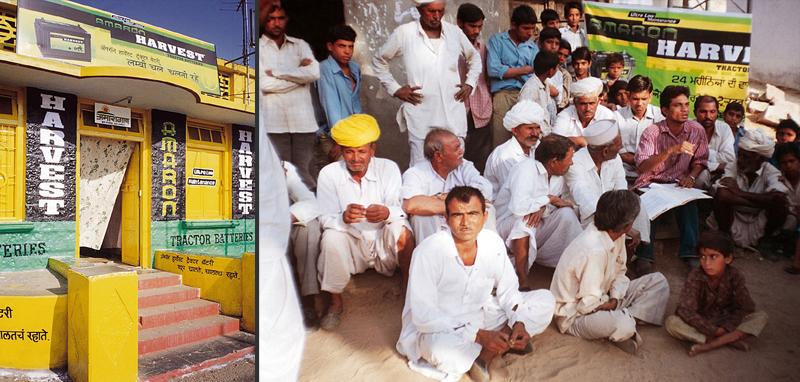
|
 SITUATION ANALYSIS: The "real" India lives in rural villages - over 70% of Indians live outside of the country's urban areas. While there is one India that is optimistically racing ahead towards emerging as a powerful global economy, there is another India that seems to be grappling with its debilitating past. If India is going to continue to progress and strengthen its economy, it is essential that India's villages progress as well. Amararaja Batteries Limited India (Amararaja), and Amararaja-Johnson Controls USA, a leading player in the Indian automotive battery sector, sought to develop and implement a corporate communications campaign that would empower people living in rural areas by giving them better and faster access to valuable information, while simultaneously promoting social and economic transformation in India's villages through effective use of Information Technology (IT). OBJECTIVES: Amararaja wanted to strengthen its brand awareness and provide tangible benefits to the communities. With competition increasing from unbranded batteries and rural India being besieged by aggressive promotions of multitude brands, Ogilvy Public Relations Worldwide (Ogilvy PR) was entrusted to create an organic link between Amararaja and its key customers - rural farmers. AUDIENCE ANALYSIS: The target audience for this campaign was rural Indian farmers and their respective families. These groups constantly seek information on various issues pertaining to their quality of life. STRATEGY: Ogilvy PR's challenge was to determine the right cause to align Amararaja's core attributes of progressiveness and innovativeness with its target audience. To determine what motivates and drives the target communities to action, Ogilvy PR conducted primary surveys and farmer group discussions in diverse Indian markets. The survey results produced one single insight, "Why is it that all the information reaches the cities first, and touches rural villages last?" Rural Indian communities expressed their desire to explore and learn more about the world without being uprooted from their villages. Farmers recognized a severe gap in obtaining timely information of the things that mattered most to them - agriculture, education, health and employment. They felt that if this critical information was easily accessible, it would give them increased knowledge and control over their lives. From this insight came the core idea that Knowledge is Power, and that power is only possible for these Indian farmers if the information was readily available. This led the team to the creative expression, "Gyan ke sang, Unnati ki Umang" - Knowledge Brings Prosperity. Ogilvy PR created a Corporate Social Responsibility (CSR) campaign on behalf of Amararaja and sought to bridge the information divide in rural India by providing Indian villages with IT solutions to enable them to further grow and develop. In addition, Amararaja achieves brand awareness as the product becomes a part of the farmer's life; hence, communication originates from and stays within the village as opposed to aggressive outside-in marketing. This strategy required a variety of methods that not only ensured platforms for quick information dissemination, but also provided robust communication on how to use the platforms. It was imperative to leverage all this for larger brand goodwill. Another important element was to demystify computers and attract children and youth to the digital platform in rural India. 
EXECUTION: The "Amaron Amaragaon" CSR campaign was launched to provide essential and available IT solutions and digital communications usage to India's rural populations. The campaign was also used to leverage Amararaja's brand and extend its corporate reputation to key audiences. Specific campaign tactics included:
The campaign not only helped to build greater awareness for Amararaja, but also served to increase the company's government relations efforts as local government officials took notice of its good work. Employee relations were also strengthened Amararaja's workforce motivated around the cause. One employee stated, "It feels good to be a part of larger goal of human development than just promoting batteries." Below are a few examples of the campaign's success:
Download the Full Report (PDF) |
| Next Award |